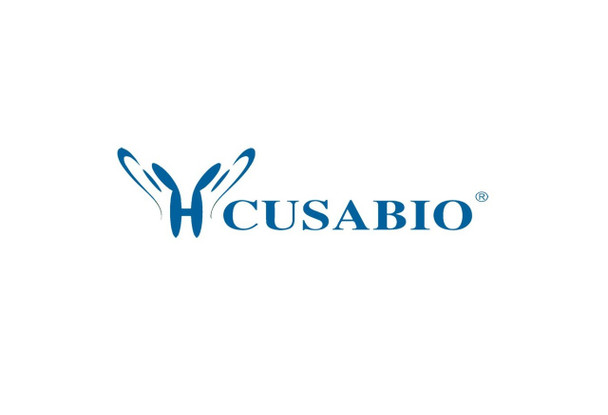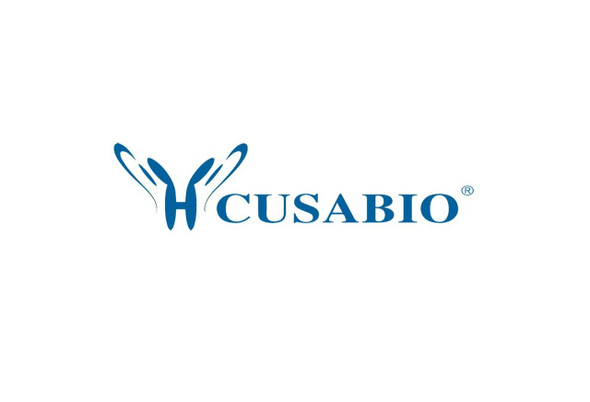Cusabio Human Recombinants
Recombinant Human Bone morphogenetic protein receptor type-1A (BMPR1A), partial | CSB-EP002748HU
- SKU:
- CSB-EP002748HU
- Availability:
- 13 - 23 Working Days
Description
Recombinant Human Bone morphogenetic protein receptor type-1A (BMPR1A), partial | CSB-EP002748HU | Cusabio
Alternative Name(s): Activin receptor-like kinase 3 ;ALK-3Serine/threonine-protein kinase receptor R5 ;SKR5; CD292
Gene Names: BMPR1A
Research Areas: Cardiovascular
Organism: Homo sapiens (Human)
AA Sequence: KHYCKSISSRRRYNRDLEQDEAFIPVGESLKDLIDQSQSSGSGSGLPLLVQRTIAKQIQMVRQVGKGRYGEVWMGKWRGEKVAVKVFFTTEEASWFRETEIYQTVLMRHENILGFIAADIKGTGSWTQLYLITDYHENGSLYDFLKCATLDTRALLKLAYSAACGLCHLHTEIYGTQGKPAIAHRDLKSKNILIKKNGSCCIADLGLAVKFNSDTNEVDVPLNTRVGTKRYMAPEVLDESLNKNHFQPYIMADIYSFGLIIWEMARRCITGGIVEEYQLPYYNMVPSDPSYEDMREVVCVKRLRPIVSNRWNSDECLRAVLKLMSECWAHNPASRLTALRIKKTLAKMVESQDVKI
Source: E.coli
Tag Info: N-terminal 6xHis-SUMO-tagged
Expression Region: 177-532aa
Sequence Info: Cytoplasmic Domain
MW: 56.6 kDa
Purity: Greater than 90% as determined by SDS-PAGE.
Relevance: On ligand binding, forms a receptor complex consisting of two type II and two type I transmbrane serine/threonine kinases. Type II receptors phosphorylate and activate type I receptors which autophosphorylate, then bind and activate SMAD transcriptional regulators. Receptor for BMP-2 and BMP-4. Positively regulates chondrocyte differentiation through GDF5 interaction .
Reference: Patterns of somatic mutation in human cancer genomes.Greenman C., Stephens P., Smith R., Dalgliesh G.L., Hunter C., Bignell G., Davies H., Teague J., Butler A., Stevens C., Edkins S., O'Meara S., Vastrik I., Schmidt E.E., Avis T., Barthorpe S., Bhamra G., Buck G. , Choudhury B., Clements J., Cole J., Dicks E., Forbes S., Gray K., Halliday K., Harrison R., Hills K., Hinton J., Jenkinson A., Jones D., Menzies A., Mironenko T., Perry J., Raine K., Richardson D., Shepherd R., Small A., Tofts C., Varian J., Webb T., West S., Widaa S., Yates A., Cahill D.P., Louis D.N., Goldstraw P., Nicholson A.G., Brasseur F., Looijenga L., Weber B.L., Chiew Y.-E., DeFazio A., Greaves M.F., Green A.R., Campbell P., Birney E., Easton D.F., Chenevix-Trench G., Tan M.-H., Khoo S.K., Teh B.T., Yuen S.T., Leung S.Y., Wooster R., Futreal P.A., Stratton M.R.Nature 446:153-158(2007)
Storage: The shelf life is related to many factors, storage state, buffer ingredients, storage temperature and the stability of the protein itself. Generally, the shelf life of liquid form is 6 months at -20?/-80?. The shelf life of lyophilized form is 12 months at -20?/-80?.
Notes: Repeated freezing and thawing is not recommended. Store working aliquots at 4? for up to one week.
Function: On ligand binding, forms a receptor complex consisting of two type II and two type I transmembrane serine/threonine kinases. Type II receptors phosphorylate and activate type I receptors which autophosphorylate, then bind and activate SMAD transcriptional regulators. Receptor for BMP2, BMP4, GDF5 and GDF6. Positively regulates chondrocyte differentiation through GDF5 interaction. Mediates induction of adipogenesis by GDF6.
Involvement in disease: Juvenile polyposis syndrome (JPS); Polyposis syndrome, mixed hereditary 2 (HMPS2)
Subcellular Location: Membrane, Single-pass type I membrane protein
Protein Families: Protein kinase superfamily, TKL Ser/Thr protein kinase family, TGFB receptor subfamily
Tissue Specificity: Highly expressed in skeletal muscle.
Paythway: Hipposignalingpathway
Form: Liquid or Lyophilized powder
Buffer: If the delivery form is liquid, the default storage buffer is Tris/PBS-based buffer, 5%-50% glycerol. If the delivery form is lyophilized powder, the buffer before lyophilization is Tris/PBS-based buffer, 6% Trehalose, pH 8.0.
Reconstitution: We recommend that this vial be briefly centrifuged prior to opening to bring the contents to the bottom. Please reconstitute protein in deionized sterile water to a concentration of 0.1-1.0 mg/mL.We recommend to add 5-50% of glycerol (final concentration) and aliquot for long-term storage at -20?/-80?. Our default final concentration of glycerol is 50%. Customers could use it as reference.
Uniprot ID: P36894
HGNC Database Link: HGNC
UniGene Database Link: UniGene
KEGG Database Link: KEGG
STRING Database Link: STRING
OMIM Database Link: OMIM









